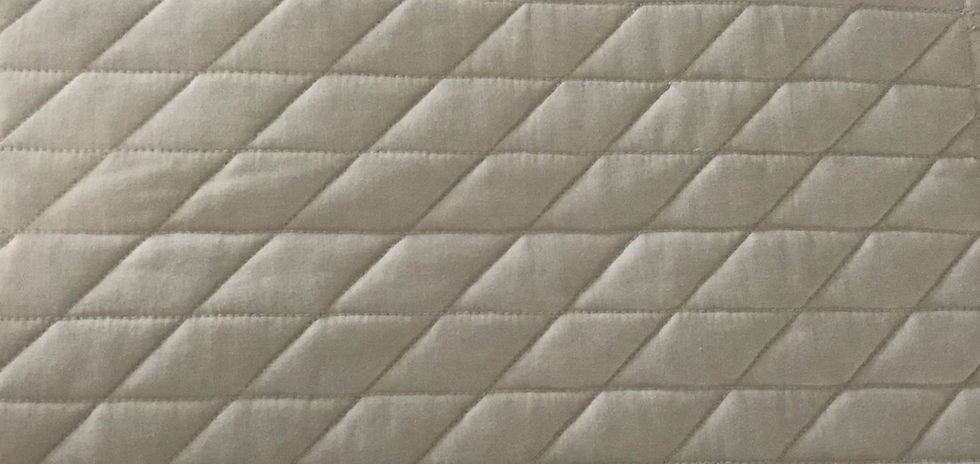How To Decide What Machine Quilting Pattern To Put Where
- Sally Terry

- Aug 13, 2019
- 3 min read
Updated: Aug 14, 2019
What patterns do I use on my quilt top and where do I put them?
There are so many pattern choices today...oodles and oodles. It is awfully confusing and I think there could be too many choices. There are 3 things that I limit myselt to when choosing patterns.
To make it easier this is what helped me the most:
First I limited myself to 3 pattern choices: Small, Medium and Large.
Second the patterns have to coordinate with one another.
Third they have to coordinate with the style of the quilt top.
1 - 2 - 3
What to choose can be just as confusing as where to put the patterns on the quilt top.
So thought I would try to make things easier and show you what really worked when I am picking patterns for a quilt.
First of all for me, it was like throwing darts at a map and see where they landed...picking patterns were the same way. "Just pick the ones you like!" That may not be the right way to do it.

When I started out you could not cross threadpaths. Am sure the Amish Quilts and style of hand quilting feathers and simple designs had a lot of influence on our choices.
The traditional fill pattern was stippling, which has to be 1/4" or closer to be considered stippling, otherwise it was called a meander. That was a must learn skill that took a lot of fine motor skill indeed!
So as I was learning to free motion machine quilt I picked one technique a week...hearts, daisies, loop meanders, or stars. Once I got to feathers that took a month.
But I learned if I concentrated on one technique at a time, you could learn a lot faster and the patterns were not so confusing and it reduced the amount of marking and ripping out too.
Here is a link to a longer YouTube Video I did on picking patterns you may want to watch. https://www.youtube.com/watch?v=5goj9wygkzA
This video is full of creative ideas of how to coordinate the patterns with the quilt style. Hopefully you will find time to watch it all the way through, because it is practically a class.

Here is an illustration of coordinating patterns.
The two that are horizontally placed across from one another are compatible because they contain shapes that are similar.
The opposite is true of the shapes that are vertically placed
above and below one another. The really don't have much in common with each other shape wise.
I know you have looked at a quilting pattern and said you like it or you don't like it combined with another quilting pattern, but do not know why....this is why. The shapes are not compatible or enough alike to work together gracefully and complement one another.
Here is where I need to say something about the straight-line. It really compliments the curved shapes. It works like the green beans in our diet....they are FREE!!!! So are straight-line designs and geometric designs. They give the eye a place to go and rest.
Next you may be thinking, but I have a computerized machine and are thousands of machine quilting patterns and design configurations. I know how it takes time to go through your patterns and make a choice and a lot of the time we buy a pattern and only use it once. Or we may look at a pattern and think I would never use that one ever...and yet it may be just the one in the right size and in the right area.
So again start with 3 compatible quilting patterns that have similar shapes. You will be able to tell if they work together or not. Plus if you elongate a pattern or condense a pattern it may distort it so much it looses it beauty. So just pick a part of a coordinating pattern to use for that particular area.
Here is a pattern download that you can use. It is from the Fleur-de-Vine 2 Pattern Pack and I think it really illustrates how compatible shapes work together and can be re-arranged to fit any area on the quilt top.
This particular pattern I stitched in a 3 tone green variegated by YLI on some beautiful natural color marble fabric and it was lovely. Try it for yourself the next time you need a nice design that is not feathers.
Hope this helps! Patterns can be a challenge but if you limit yourself you actually make your choices easier.
If you would like more on how to choose machine quilting patterns be sure to leave a comment about what you would like to know or ask a question.













This was aa lovely blog post